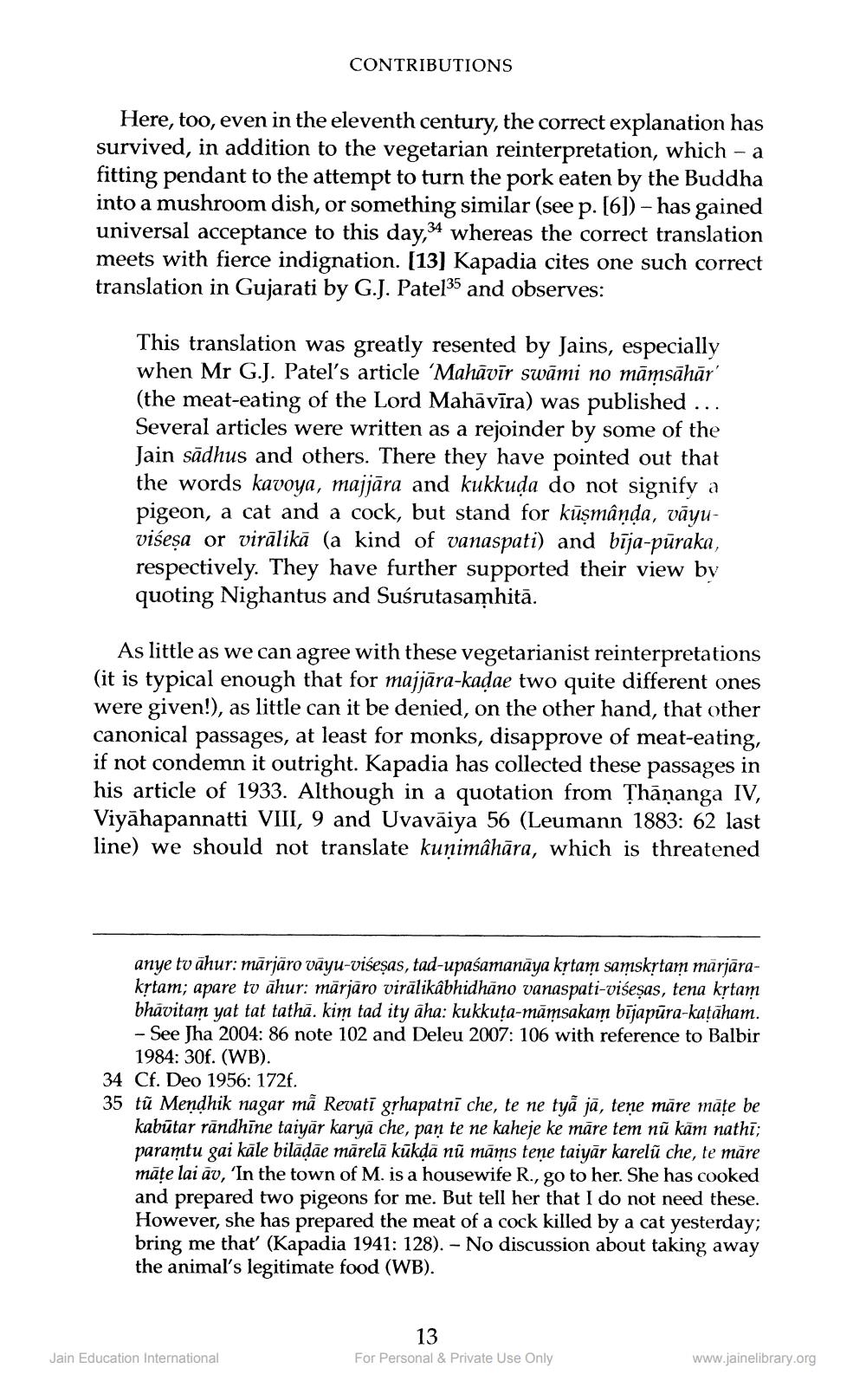________________
CONTRIBUTIONS
Here, too, even in the eleventh century, the correct explanation has survived, in addition to the vegetarian reinterpretation, which - a fitting pendant to the attempt to turn the pork eaten by the Buddha into a mushroom dish, or something similar (see p. [6]) - has gained universal acceptance to this day,34 whereas the correct translation meets with fierce indignation. (13) Kapadia cites one such correct translation in Gujarati by G.J. Patel35 and observes:
This translation was greatly resented by Jains, especially when Mr G.J. Patel's article ‘Mahāvīr swāmi no māmsāhār' (the meat-eating of the Lord Mahāvīra) was published ... Several articles were written as a rejoinder by some of the Jain sādhus and others. There they have pointed out that the words kavoya, majjāra and kukkuda do not signify a pigeon, a cat and a cock, but stand for kūşmânda, vāyuvišeșa or virālikā (a kind of vanaspati) and bīja-pūraka, respectively. They have further supported their view by quoting Nighantus and Suśrutasamhitā.
As little as we can agree with these vegetarianist reinterpretations (it is typical enough that for majjāra-kadae two quite different ones were given!), as little can it be denied, on the other hand, that other canonical passages, at least for monks, disapprove of meat-eating, if not condemn it outright. Kapadia has collected these passages in his article of 1933. Although in a quotation from Thānanga IV, Viyāhapannatti VIII, 9 and Uvavāiya 56 (Leumann 1883: 62 last line) we should not translate kuņimâhāra, which is threatened
anye tv āhur: mārjāro vāyu-vibesas, tad-upaśamanāya krtam samskrtam märjārakrtam; apare tv āhur: mārjāro virālikâbhidhāno vanaspati-višeşas, tena krtam bhävitam yat tat tathā. kim tad ity aha: kukkuța-māmsakam bijapūra-katāham. - See Jha 2004: 86 note 102 and Deleu 2007: 106 with reference to Balbir
1984: 30f. (WB). 34 Cf. Deo 1956: 172f. 35 tū Mendhik nagar mã Revati grhapatnī che, te ne tyā jā, tene māre māte be
kabūtar rāndhīne taiyar karya che, paņ te ne kaheje ke māre tem nũ käm nathi; paramtu gai kāle bilādāe mārelā kūkdā nū māms tene taiyar karelũ che, te māre māte lai āv, 'In the town of M. is a housewife R., go to her. She has cooked and prepared two pigeons for me. But tell her that I do not need these. However, she has prepared the meat of a cock killed by a cat yesterday; bring me that (Kapadia 1941: 128). - No discussion about taking away the animal's legitimate food (WB).
13 For Personal & Private Use Only
Jain Education International
www.jainelibrary.org




